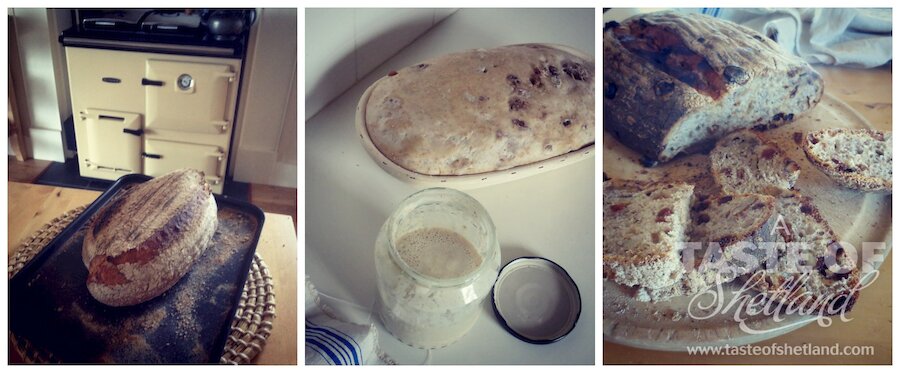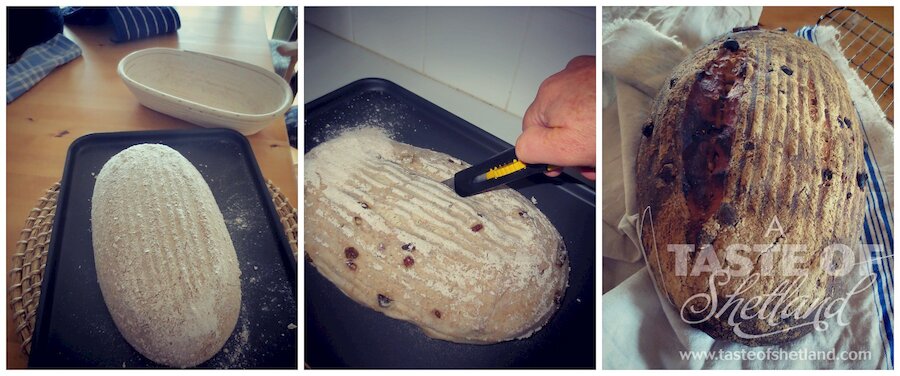My sourdough starter is quite lively at the moment and as we have had friends here for the South Mainland Up Helly Aa I have been busy making extra bread. I recently made a plain loaf and also a sultana and walnut loaf.
A starter can be made very simply using flour, water and time and patience. Once it becomes active – after a few days it can be used as often as you like. Mine often sits in the fridge for several weeks if I am away, but it can easily be brought back to life within a day or so by feeding with flour and water. The best place for really good background information is www.realbreadcampaign.org and then look at their sourdough section.
In his book ‘Brilliant Bread’ Shetlander James Morton (runner up in the Great British Bake-off 2012) provides a range of recipes, photos and advice.
Sourdough
Ingredients:
- Sourdough starter - 200 grams
- Strong flour - 500 grams
- Salt - 10 grams
- Cold water - 300 ml
Instructions:
- For the sultana and walnut loaf I used 400g strong white and 100g spelt flour. In addition I added 125g walnut halves and 100g sultanas. All the ingredients were bought from Scoop Wholefoods in Lerwick who also supply almost 20 shops throughout Shetland.
- The approximate timings were as follows:- all ingredients weighed and mixed in my ‘Kenwood Chef’ machine for about 10 minutes mid-morning on day one. Cover the machine with a clean teatowel and get on with the day.
- In the evening set the machine going for another 5 minutes then tip out the dough and knead well on a floured surface until the dough is soft smooth and elastic. Shape it into an elongated ‘sausage’ and place in the banneton or proving basket. Cover with a teatowel and leave overnight.
- The dough sticking in the proving basket can also prove to be a problem so give it a really liberal coating of the flour (rye or spelt seems to be better at preventing sticking). My banneton came from www.bakerybits.co.uk and it measures 12’’x7’’max.
- In the morning of the next day light the oven to maximum heat - 220°C or even higher. Place a roasting tin with about an inch of water in the bottom of the oven. This helps to create a steamy atmosphere in the oven which produces a better crust. Put the baking tray in the oven to heat up roughly in the centre of the oven.
- When the oven is REALLY hot take out the tray and place on a heatproof mat, sprinkle about a tablespoon of semolina on the tray (for that lovely authentic crunch) and turn out the dough. Using scissors or a sharp knife – I use a craft knife – make a deep slit down the length of the loaf slightly to one side and place it in the oven. Set the timer for 25 mins and don’t peep for at least 20 minutes. The loaf may need a little longer but it should be really deep brown and very crusty.
- Allow to cool on a wire rack. If it does not all get eaten it will make delicious toast for at least the next 3 or 4 days and it will freeze well. I never throw any sourdough away – I make breadcrumbs or croutons which can also be frozen in a plastic box.


